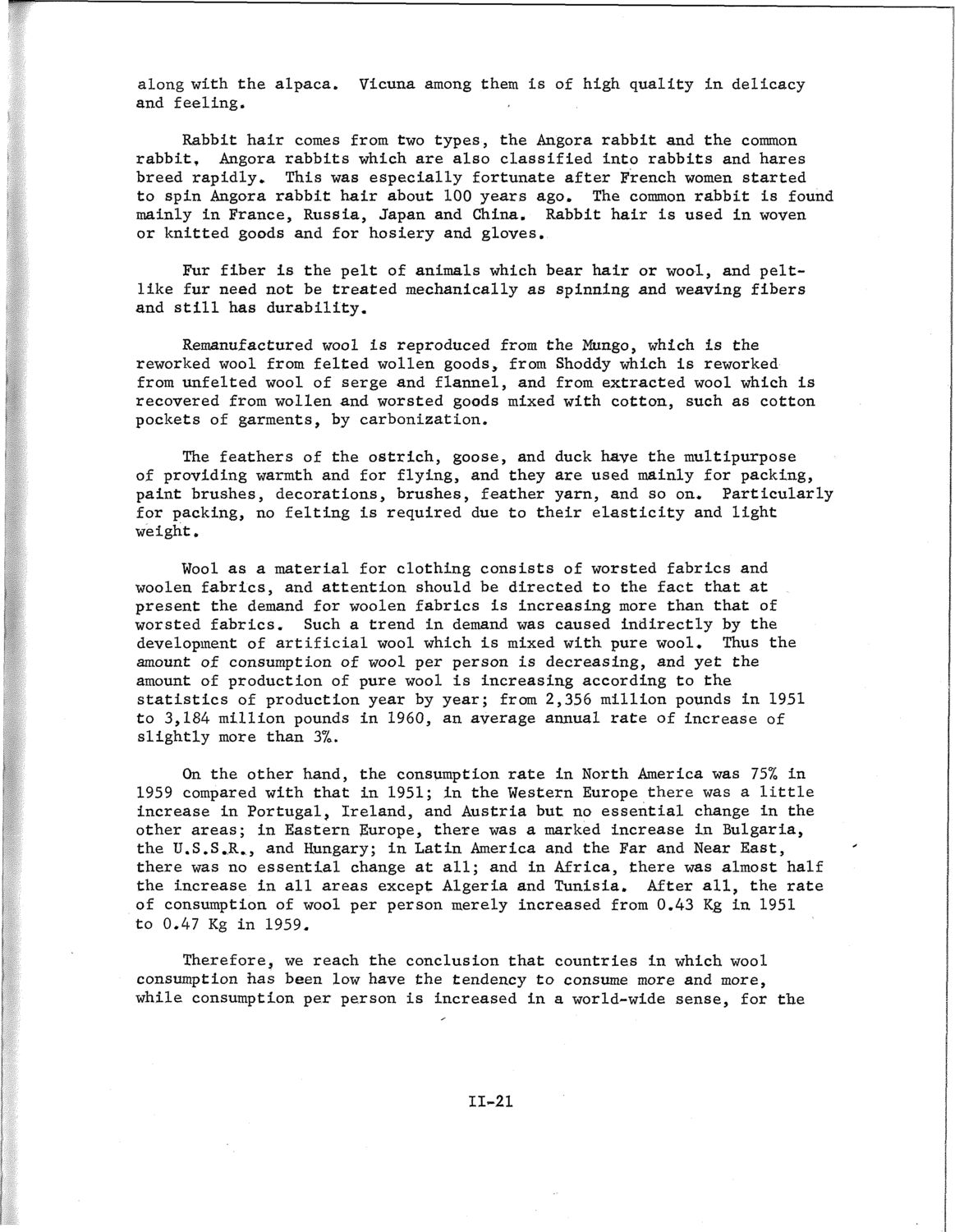| |
| |
Caption: SWE - Proceedings of the First International Conference of Women Engineers and Scientists
This is a reduced-resolution page image for fast online browsing.

EXTRACTED TEXT FROM PAGE:
along with the alpaca. and feeling. Vicuna among them is of high quality in delicacy Rabbit hair comes from two types, the Angora rabbit and the common rabbit, Angora rabbits which are also classified into rabbits and hares breed rapidly. This was especially fortunate after French women started to spin Angora rabbit hair about 100 years ago. The common rabbit is found mainly in France, Russia, Japan and China, Rabbit hair is used in woven or knitted goods and for hosiery and gloves. Fur fiber is the pelt of animals which bear hair or wool, and peltlike fur need not be treated mechanically as spinning and weaving fibers and still has durability. Remanufactured wool is reproduced from the Mungo, which is the reworked wool from felted wollen goods, from Shoddy which is reworked from unfelted wool of serge and flannel, and from extracted wool which is recovered from wollen and worsted goods mixed with cotton, such as cotton pockets of garments, by carbonization. The feathers of the ostrich, goose, and duck have the multipurpose of providing warmth and for flying, and they are used mainly for packing, paint brushes, decorations, brushes, feather yarn, and so on. Particularly for packing, no felting is required due to their elasticity and light weight. Wool as a material for clothing consists of worsted fabrics and woolen fabrics, and attention should be directed to the fact that at present the demand for woolen fabrics is increasing more than that of worsted fabrics. Such a trend in demand was caused indirectly by the development of artificial wool which is mixed with pure wool. Thus the amount of consumption of wool per person is decreasing, and yet the amount of production of pure wool is increasing according to the statistics of production year by year; from 2,356 million pounds in 1951 to 3,184 million pounds in 1960, an average annual rate of increase of slightly more than 3TL. On the other hand, the consumption rate in North America was 75% in 1959 compared with that in 1951; in the Western Europe there was a little increase in Portugal, Ireland, and Austria but no essential change in the other areas; in Eastern Europe, there was a marked increase in Bulgaria, the U.S.S.R., and Hungary; in Latin America and the Far and Near East, there was no essential change at all; and in Africa, there was almost half the increase in all areas except Algeria and Tunisia. After all, the rate of consumption of wool per person merely increased from 0.43 Kg in 1951 to 0.47 Kg in 1959. Therefore, we reach the conclusion that countries in which wool consumption has been low have the tendency to consume more and more, while consumption per person is increased in a world-wide sense, for the 11-21
| |